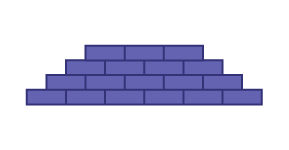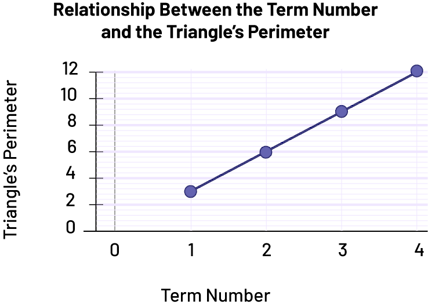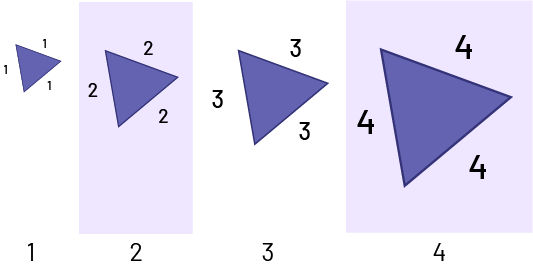C1.2 Create and translate repeating, growing, and shrinking patterns using various representations, including tables of values, graphs, and, for linear growing patterns, algebraic expressions and equations.
Activity 1: Brick Wall (Representations of a Shrinking Pattern)
Present students with the following image of a brick wall:

Have students represent the pattern using a strategy of their choice.
Possible Representations
1. Representation using words (description)
The brick wall consists of the following:
- The first row of the wall is composed of 6 bricks.
- The second row of the wall is composed of 5 bricks.
- The third row of the wall is composed of 4 bricks.
- To extend the brick wall based on this pattern, I assume that the fourth row will be 3 bricks, the fifth row will be 2 bricks, and the sixth row will be 1 brick.
2. Table of values
| Term Number (Row Number) |
1 | 2 | 3 | 4 |
|---|---|---|---|---|
| Number of Bricks | 6 | 5 | 4 | 3 |
Activity 2: Representations of a Pattern Using a Table of Values
Present students with the following table of values:
| Term Number (n) | 1 | 2 | 3 | 4 |
|---|---|---|---|---|
| Perimeter of the triangle (P) | 3 | 6 | 9 | 12 |
Allow students to represent the pattern using the strategy of their choice.
Possible Representations
1. Graphical Representation

2. Illustration

3. Algebraic Expression
P = n × 3 or P = 3n
Source: translated and adapted from En avant, les maths!, 6e année, ML, Algèbre, Savoir reconnaître une suite croissante
linéaire et la représenter par une expression algébrique et une équation, p. 7.
